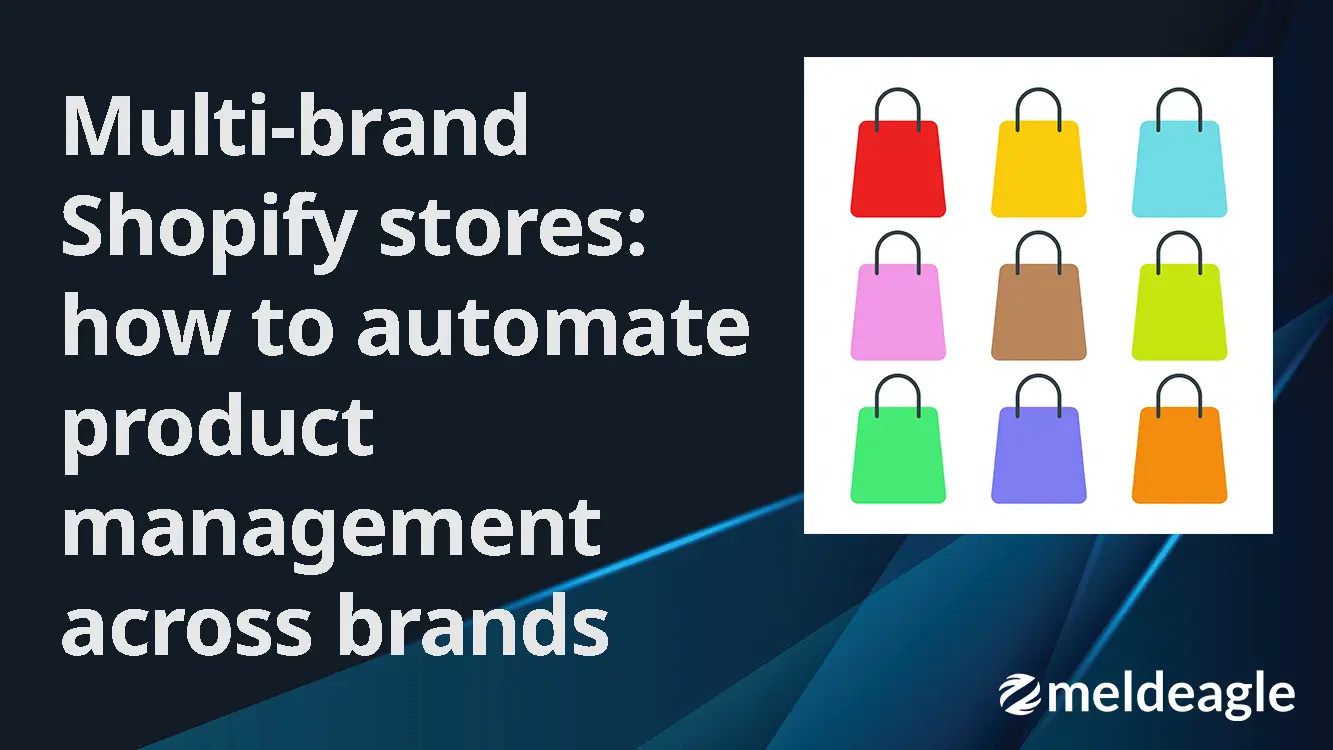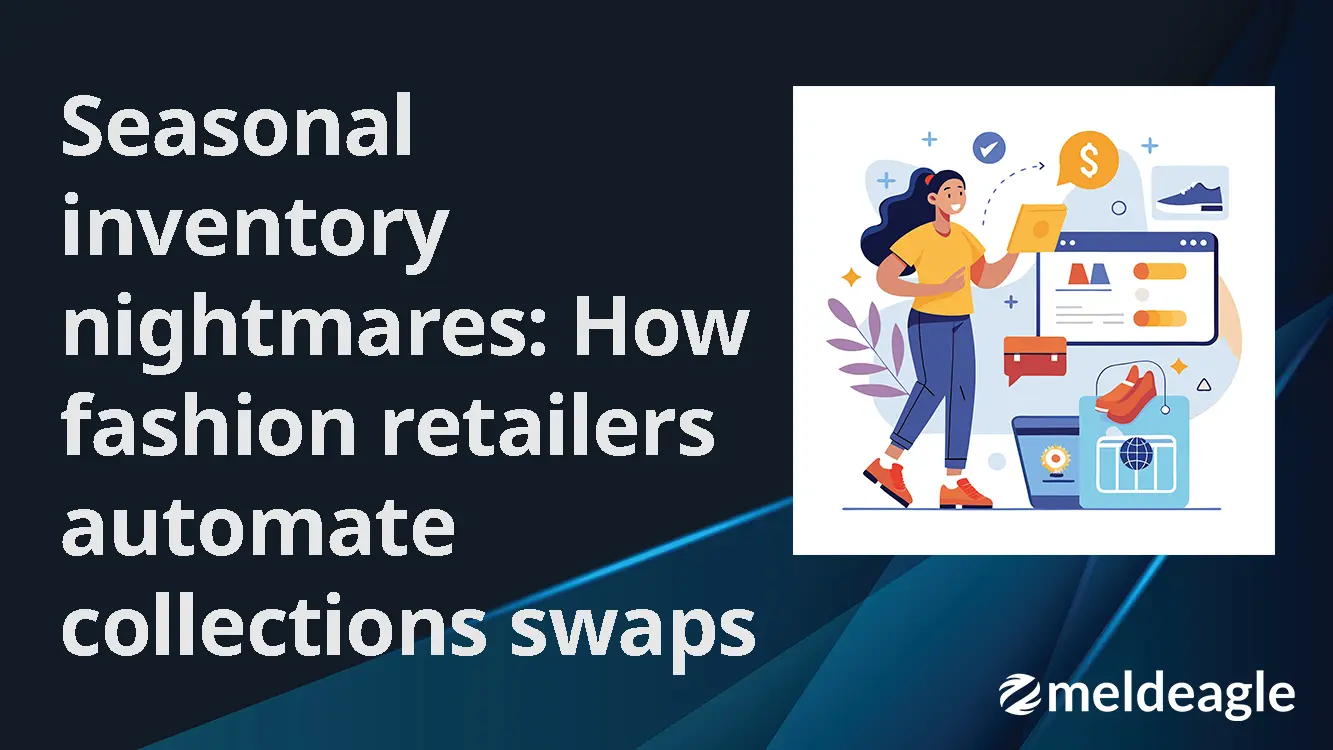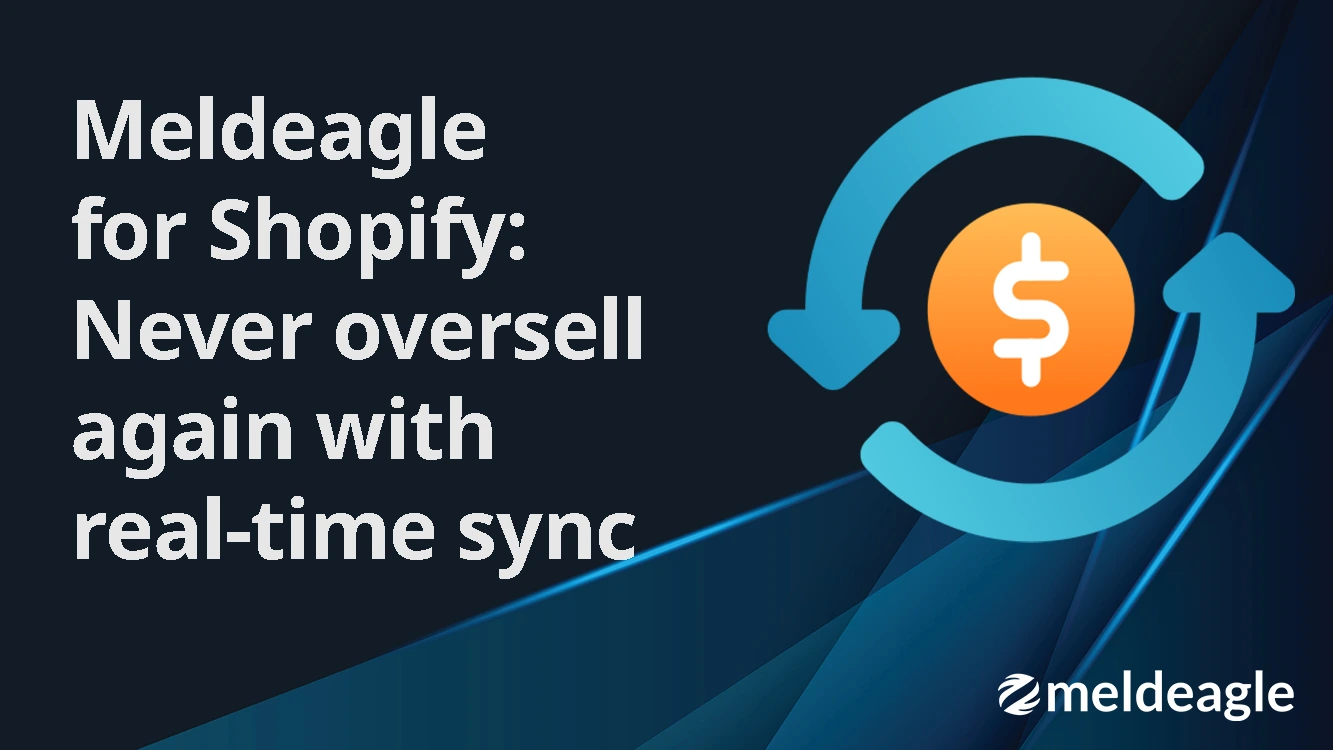
Multi-brand Shopify stores: how to automate product management across brands
Managing one brand on Shopify is challenging enough. But when you're juggling five, ten, or twenty brands, each with unique pricing rules, authorised dealer requirements, and brand guidelines, the complexity multiplies exponentially.
Yet multi-brand retail represents one of the fastest paths to e-commerce growth. The question isn't whether to expand your brand portfolio – it's how to manage it without drowning in operational complexity.
This guide reveals how successful multi-brand retailers automate their operations to maintain brand integrity whilst scaling efficiently.
The multi-brand challenge: why traditional methods fail
Multi-brand management isn't just single-brand management multiplied. It's exponentially more complex due to interconnected challenges.
The complexity multiplication effect
Consider a typical scenario:
Multi-brand complexity calculation
- 5 brands
- 1,000 products per brand
- 4 price tiers per brand
- 3 sales channels
- 2 currencies
Brand-specific requirements that complicate everything
Each brand comes with unique demands:
- Aggressive pricing flexibility
- Bulk discount structures
- Different quality standards
- Geographic restrictions
- Authorised dealer verification
- Special terms
- Complete control but need differentiation
- Unique descriptions
- Custom packaging info
When these requirements clash, mistakes happen. And mistakes with brand compliance can cost you valuable supplier relationships.
Setting up your multi-brand automation foundation
Success starts with proper structure. Here's how leading multi-brand retailers organise for automation with MeldEagle.
Creating a scalable naming convention
Your product identifiers must communicate essential information instantly:
"Blue Shirt 001"
"NKE-AW24-MAPP-RUN-BLU-001"
Naming convention breakdown:
| Component | Example | Purpose |
|---|---|---|
| Brand code | NKE | Identifies the brand |
| Season | AW24 | Autumn/Winter 2024 |
| Category | MAPP | Men's Apparel |
| Subcategory | RUN | Running |
| Variant | BLU | Blue colour |
| Sequential | 001 | Unique identifier |
This structure enables intelligent product mapping across your entire catalogue when using automated product management solutions.
Establishing brand hierarchies
Not all brands are equal. Establish clear hierarchies:
Tier 1 - Premium
- Highest margins
- Strictest controls
- Priority inventory
- Premium placement
Tier 2 - Core
- Bread and butter
- Balanced margins
- Standard controls
- Regular placement
Tier 3 - Value
- Volume drivers
- Lower margins
- Flexible pricing
- Promotional focus
This hierarchy drives automated decision-making across your operations.
Centralised data management
Multi-brand success requires a single source of truth:
- Master product database
- Centralised inventory pool
- Unified customer data
- Consolidated analytics
Without centralisation, you're managing multiple businesses, not one multi-brand business. This is where product data synchronisation becomes crucial.
Brand-specific pricing automation
Pricing might be the most complex aspect of multi-brand management. Here's how automation transforms it from nightmare to competitive advantage.
Building dynamic pricing rules
Each brand needs unique pricing logic:
Premium brand rules
Base Cost × 2.8 = Regular Price
Regular Price × 0.9 = Min Sale Price
Never drop below MAP
Peak season: +15%Value brand rules
Base Cost × 1.8 = Regular Price
Regular Price × 0.6 = Min Sale Price
Aggressive markdowns allowed
Volume discounts: 10, 25, 50 unitsSmart pricing rule automation applies these instantly across thousands of products.
Managing cross-brand pricing conflicts
When the same product appears under multiple brands, pricing gets tricky:
- Maintain price consistency where required
- Allow differentiation where beneficial
- Prevent channel conflicts
- Respect MAP agreements
Automation handles these complexities through rule hierarchies and exception handling.
Currency and regional pricing
Multi-brand often means multi-market:
Automated multi-currency management
- Real-time exchange rate updates
- Regional pricing strategies
- Tax-inclusive/exclusive display
- Purchasing power adjustments
Manual currency management across brands is error-prone. Multi-currency product management automation ensures accuracy.
Maintaining brand guidelines at scale
Brand integrity is non-negotiable. Here's how automation helps maintain standards whilst scaling.
Automated content compliance
Each brand has specific requirements:
Description templates by brand
Brand A
Technical focusTechnical specs first, features second
Brand B
Lifestyle focusLifestyle focus, minimal tech talk
Brand C
Sustainability focusSustainability messaging prominent
Automated product categorisation ensures products land in brand-appropriate categories with correct messaging.
Image and asset management
Visual consistency matters:
- Automatic watermarking with brand logos
- Background colour requirements
- Image sizing specifications
- Alt text formatting
Automated product image optimisation maintains visual standards without manual intervention.
Authorised dealer compliance
Many brands require proof of authorisation:
- Automated badge display
- Certification verification
- Territory restrictions
- Promotional limitations
Automation ensures compliance without constant manual checking.
Inventory allocation strategies
With multiple brands competing for the same inventory pool, allocation becomes strategic.
Priority-based allocation
Automate inventory distribution based on:
Brand performance metrics
- Sell-through rates
- Margin contribution
- Customer lifetime value
- Return rates
Strategic priorities
- New brand launches
- Seasonal priorities
- Promotional calendars
- Channel importance
Real-time rebalancing
As sales patterns emerge, automation can:
- Shift inventory between brands
- Adjust safety stock levels
- Predict stockout risks
- Trigger reorder points
This dynamic approach maximises inventory turns whilst minimising stockouts.
Cross-brand substitution logic
When Brand A runs out, can you offer Brand B?
- Identify suitable substitutes
- Maintain margin requirements
- Respect brand guidelines
- Track substitution success
Real-time stock level monitoring across multiple channels enables intelligent substitution.
Coordinating multi-brand promotions
Promotions become complex when managing multiple brands with different rules.
Promotional hierarchy management
Establish clear rules for promotion conflicts:
- Brand-specific promotions (highest priority)
- Category-wide promotions
- Storewide promotions
- Loyalty programme discounts
Automation applies the most beneficial promotion whilst respecting brand restrictions.
Cross-brand bundle creation
Intelligent bundling can boost average order values:
- Complementary brand pairing
- Margin optimisation
- Inventory clearance
- Brand introduction
Automated pricing rule application for different customer segments ensures bundles price correctly.
Coordinated campaign execution
Synchronise promotional calendars:
- Avoid brand conflicts
- Maximise marketing impact
- Coordinate inventory preparation
- Align with supplier calendars
Manual coordination is a full-time job. Automation makes it seamless.
Reporting and analytics across brands
You can't manage what you can't measure. Multi-brand reporting requires sophisticated automation.
Brand performance dashboards
Track key metrics by brand:
Key performance indicators
Revenue & growth
Track trends by brandMargin analysis
Compare profitabilityInventory turns
Efficiency metricsAutomated reporting provides real-time visibility without manual spreadsheet management.
Cross-brand customer insights
Understand how customers shop across brands:
- Brand affinity patterns
- Cross-brand purchase behaviour
- Lifetime value by brand mix
- Optimal brand introduction sequences
These insights drive strategic decisions about brand portfolio management.
Supplier scorecards
Evaluate brand relationships objectively:
- Sell-through rates
- Margin contribution
- Operational complexity
- Support quality
- Growth potential
Data-driven decisions about which brands to expand or exit.
Technical implementation strategies
Moving from concept to reality requires thoughtful implementation.
Phase 1: Foundation
Months 1-2
- Audit setup
- Naming conventions
- Brand hierarchies
- Product mapping
Phase 2: Basic
Months 2-3
- Pricing rules
- Inventory sync
- Brand templates
- Basic reporting
Phase 3: Advanced
Months 4-6
- Dynamic allocation
- Promotional sync
- Cross-analytics
- Predictive features
Phase 4: Scale
Ongoing
- New brands
- New channels
- AI features
- Optimisation
Integration requirements
Multi-brand automation typically requires:
- API-based product automation for real-time updates
- SFTP product data integration for batch processing
- ERP integration for inventory management
- Marketing platform connectivity
Choose solutions that support multiple integration methods like MeldEagle's flexible automation platform.
Common pitfalls and solutions
Learn from others' mistakes to avoid costly setbacks.
Problem: Automating everything at once creates chaos
Solution:
Phase implementation by brand importance
Problem: One-size-fits-all rules upset brand partners
Solution:
Build flexibility into automation rules
Problem: Automation amplifies data errors
Solution:
Clean data before automating
Problem: Errors affect multiple brands simultaneously
Solution:
Test thoroughly with subset before full rollout
ROI of multi-brand automation
The investment case for automation is compelling:
Operational savings
Manual approach
- Team size: 5-10 people
- Updates: 48-72 hours
- Error rate: 5-10%
- Annual cost: £150,000-300,000
Automated approach
- Team size: 1-2 people
- Updates: Real-time
- Error rate: <0.1%
- Annual cost: £30,000-50,000
Typical results from automation
80%
Cost reduction95%
Time savings99.9%
Accuracy rate3x
Speed to marketGetting started with multi-brand automation
The path to successful multi-brand automation is clear:
- Audit your current state - Document all brands, requirements, and pain points
- Prioritise by impact - Start with your most valuable or problematic brands
- Choose the right platform - Ensure it handles your specific multi-brand needs
- Start small, scale fast - Prove the concept before full rollout
- Monitor and optimise - Continuous improvement is key
Multi-brand management doesn't have to be a nightmare. With the right Shopify automation solution, you can transform complexity into competitive advantage.
Whether you're managing five brands or fifty, automation is no longer optional – it's essential for survival and growth in modern e-commerce.
Ready to transform your multi-brand operations? Discover how MeldEagle's advanced automation features can streamline your entire brand portfolio management.




